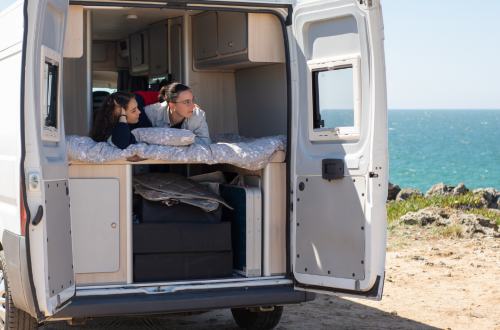
Everything You Need to Know About Traveling with Pets: A Guide for Pet Owners
Traveling with pets can be a rewarding experience, but it requires careful planning. Understanding the necessary preparations, regulations, and tips can ensure a smooth journey for both the pet and the owner. Whether planning a road trip or a flight, knowing what to expect can alleviate stress and create a more enjoyable travel experience.
Every destination has its own rules and guidelines for pet travel, impacting accommodations, transportation, and activities. Familiarizing oneself with these regulations is crucial for a hassle-free experience. Additionally, packing essential items like food, water, and comfort items can make the trip more pleasant for the pet.
Moreover, incorporating rest stops and considering the pet’s temperament can enhance travel enjoyment. Ensuring that they are comfortable and safe throughout the journey is paramount. Being well-informed allows pet owners to focus on the adventure ahead while catering to their furry companions’ needs.
Essential Preparation for Traveling With Pets
Traveling with pets requires thorough preparation. This involves finding suitable accommodations, ensuring health measures are in place, and maintaining proper identification for the pet.
Researching Pet-Friendly Options
Before committing to travel, it is essential to identify pet-friendly accommodations. Websites like BringFido and Airbnb can help locate hotels or rentals that welcome pets.
Consider reviewing policies regarding pet size, breed restrictions, and additional fees.
Research the nearby areas as well. The availability of green spaces and pet-friendly attractions can enhance the trip. Always verify details directly with the property to ensure current policies are clear and up-to-date.
Vaccinations and Health Certificates
Pet vaccinations are crucial when traveling. Many destinations require proof of vaccinations, especially for rabies. Contact a veterinarian to confirm necessary shots according to the destination’s regulations.
A health certificate is often required and is typically issued within a specific timeframe before travel. This document verifies that the pet is disease-free and fit for the journey. Make sure it includes details about vaccinations, the pet’s overall health, and any ongoing treatments, such as dog arthritis treatment, to help keep your pet comfortable and mobile during travel.
Microchipping and Pet Identification
Microchipping pets is a vital safety step during travel. A microchip provides permanent identification, significantly increasing the chances of a lost pet being returned. This tiny chip contains essential information that can be scanned by veterinarians or shelters.
In addition to microchipping, pets should wear collars with identification tags. Tags should include the owner’s contact number and address. This dual approach provides the best chance for reuniting with a lost pet while traveling.
Choosing the Right Mode of Travel
Selecting the appropriate mode of travel for pets is crucial for their safety and comfort. Different travel options come with their own guidelines and considerations.
Flying With Pets: Guidelines and Best Practices
When flying with pets, regulations vary by airline. It’s essential to check each airline’s specific policies regarding pet carriers. Most require carriers to be well-ventilated and secure, with adequate space for pets to stand, turn around, and lie down comfortably.
Key Points:
- Carrier Size: Measure your pet before choosing a carrier, as size limits differ.
- Health Certificates: Many airlines require a health certificate issued by a veterinarian within a specific timeframe before travel.
- In-Cabin vs. Cargo: Smaller pets may travel in the cabin, while larger breeds usually go in cargo. Ensure the cargo area is temperature-controlled.
Traveling by Car With Pets
Traveling by car provides flexibility and can be less stressful for pets. To ensure safety, pets should be secured using pet seat belts or in carriers. This prevents distractions and protects both passengers and pets.
Key Points:
- Frequent Breaks: Schedule regular stops to let pets relieve themselves and stretch their legs.
- Hydration and Food: Bring enough water and food for the journey, along with familiar items like blankets or toys.
- Temperature Control: Keep the car’s climate comfortable, avoiding extreme heat or cold.
Traveling With Service Animals and Emotional Support Animals
Service animals and emotional support animals are afforded special accommodations during travel. Laws under the Americans with Disabilities Act (ADA) mandate that service animals must be allowed in all public places, including planes.
Key Points:
- Documentation: Provide necessary documentation if flying with an emotional support animal.
- Behavior: These animals must remain calm and under control at all times.
- Airline Policies: Airlines may have specific requirements regarding the type of documentation needed and may restrict other types of support animals.
Being informed about these guidelines helps ensure a smoother travel experience for both pets and their owners.
Ensuring Comfort and Safety During the Journey
Traveling with pets requires careful planning to ensure their comfort and safety. Attention to accommodation, packing essentials, and safety measures during the journey contribute significantly to a smooth experience.
Selecting Pet-Friendly Accommodation
When booking lodging, confirm that it caters to pets. Numerous pet-friendly hotels are available, and it’s crucial to check their policies regarding pet size, breed restrictions, and potential fees.
Consider using platforms like Airbnb or Vrbo, as many hosts welcome pets. Look for amenities such as fenced yards or nearby parks that allow pets to exercise and relieve themselves. Always verify the cleanliness and safety of the space for your pet’s well-being.
Packing Pet Travel Essentials
Packing is vital for a successful trip with pets. Essentials include food, water, bowls, leash, waste bags, and grooming supplies. A travel carrier or crate ensures safety while securing a calming environment for the pet.
Including familiar items like toys or blankets can reduce anxiety. Keep all documents such as vaccination records handy in case of emergencies. Having a first aid kit specifically for pets can be invaluable in unforeseen circumstances.
Pet Safety Tips on the Road and in the Air
Ensuring safety during travel involves several key practices. Keep pets secured in a well-ventilated crate in the vehicle. Avoid letting them roam freely, as sudden stops can lead to injury.
During air travel, check airline regulations for pet transport, as many have specific guidelines. Using a collar with ID tags and microchipping the pet offers added security in case of separation. Stay attentive to your pet’s comfort and hydration needs, especially during long journeys.
Finding Pet-Friendly Rest Stops and Amenities
Planning for breaks is essential during travel. Use apps or websites that highlight pet-friendly rest stops where pets can stretch and relieve themselves. Look for locations with amenities like dog parks or areas designated for pets to play.
Researching ahead can save time and reduce stress. Ensure the stops are safe and welcoming to both pets and owners, providing space for a comfortable break.
Arriving at Your Destination With Your Pet
Arriving at a new location with a pet can be an exciting experience. It’s essential to ensure that the transition is smooth for both the pet and the owner. Key considerations include how pets adjust to new environments and the availability of local services.
Adjusting to New Environments
Pets may take time to acclimate to new surroundings. Upon arrival, allowing them to explore the space is crucial. Owners should create a comfortable area with familiar items, such as their bed or favorite toys.
Establishing a routine can also aid adjustment. Feeding times, walks, and playtime should mirror their previous schedule. This familiarity helps pets feel secure. Keeping the noise level low and minimizing disruptions can also ease the transition.
Observation is important. Owners should watch for signs of stress, such as excessive barking or hiding. If these behaviors occur, providing extra attention and reassurance can help.
Locating Local Pet Sitters and Pet Care Services
Finding local pet care services is vital in a new area. To begin, online platforms and apps can assist in locating pet sitters quickly. Websites like Rover and Wag! Offer databases of local professionals along with reviews.
Additionally, asking neighbors or local pet owners for recommendations can yield reliable options. Many services offer various care types, from daily visits to overnight stays. It’s advisable to confirm the certifications and training of the sitters.
Before making a selection, consider scheduling a meet-and-greet. This allows both the pet and the sitter to interact in a stress-free environment. Communication about specific needs, routines, and any quirks of the pet ensures a better match.




